
The recent progresses on the research field of biomedical sciences and its different areas necessitates providing the infrastructure and services needed to keep pace with the advances in the different scientific disciplines. To achieve that, An-Najah National University offers its medical students at the Faculty of Medicine and Health Sciences the central research laboratory, which is well-prepared and equipped with the latest tools and devices needed for the scientific research.
The central research laboratory consists of:
Genetic Research and Cell Transplant Lab : It aims to carry out research regarding genetics, molecular biochemistry, and cell transplant in terms of:
- Discovering genetic mutations and their relation to genetic diseases.
- Molecular Medicine Science, which studies infectious and chronic diseases at the molecular level.
- Studying the impact of medicines, plants, and organic compounds on the different cells and tissues through a special discrete unit.
- Studying cellular signs and means of regulating them in normal cases as well as diseases.
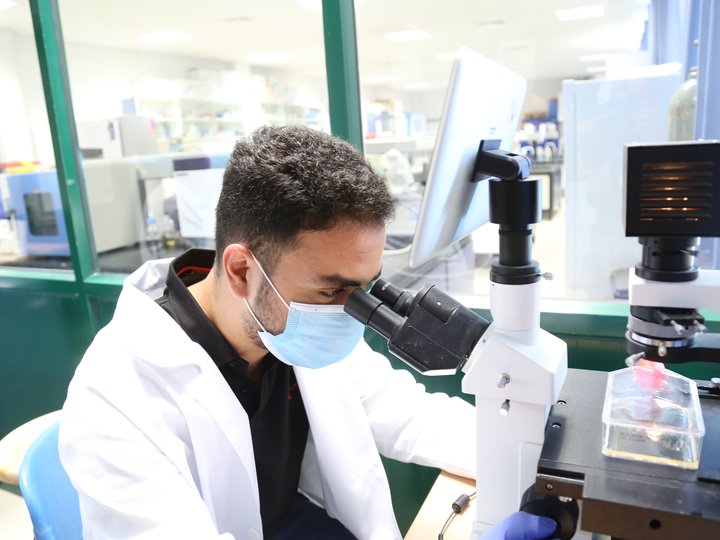

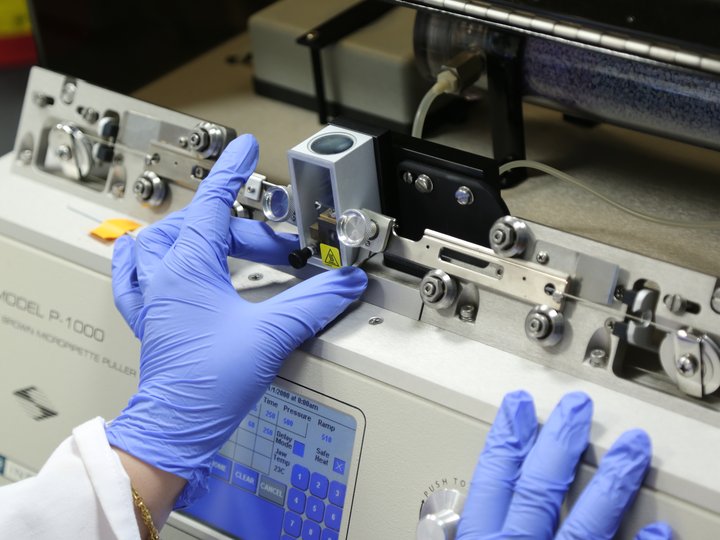
The Neuroscience Research Centers on Glutamate Ion Channel Receptors (iGluRs). These receptors mediate synaptic neurotransmission and are indispensable in brain activity, such as memory and learning. Upon binding to glutamate, the glutamate receptor rapidly changes its conformation and opens its ion channel pore to allow small cations such as sodium ions to flow across the cellular membrane, transmitting an electrical signal between neurons. Moreover, research will concern the membrane proteins on the cell surface. The activity of virtually every cell is regulated by extracellular signals, such as neurotransmitters, hormones, and sensory stimuli. These signals are transmitted into the cell interior via membrane receptor proteins. Understanding how these membrane proteins mediate signal transmission and transduction is the primary research interest in the neuroscience laboratory. We are particularly interested in the structure and function relationship, the kinetic and molecular mechanism of protein function by protein-protein and protein-drug interactions. We also attempt to develop better inhibitor/potentiators to regulate membrane protein functions. In the long term, we hope that our research will provide not only insight into the mechanisms of action of these molecular machines but also clues for the design of molecular devices, which can be used (i) for studying signal transduction pathways and (ii) as diagnostic/detection tools for disease treatment. We use an interdisciplinary approach in our research, including rapid kinetic techniques suitable for membrane proteins, biochemical and biophysical chemistry, molecular biology, electrophysiology, and neuroscience.
Neuroscience Center
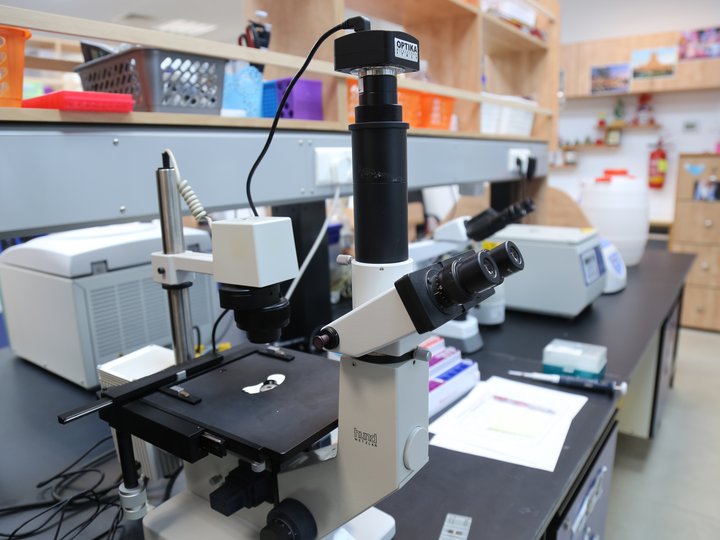
Conducts basic, translational, and clinical research to develop novel drugs to assist the body in killing cancer cells and develop optimal conditions to regrow, repair or replace damaged or diseased cells, organs or tissues.
The aim is to translate findings into clinical trials that make a difference in the lives of patients (from bench to bedside) as we work in tandem with academic and industry colleagues.
The goals are to identify critical genes and pathways that distinguish cancer from normal (stem) cells, isolate tissue-specific stem cells and define the conditions that are required to repair damaged tissues, develop novel drugs for cancer therapy and regenerative medicine, fix defective, disease-causing genes (gene therapy) and re-growth of damaged tissues (body parts).
An-Najah Center for Cancer and Stem Cell Research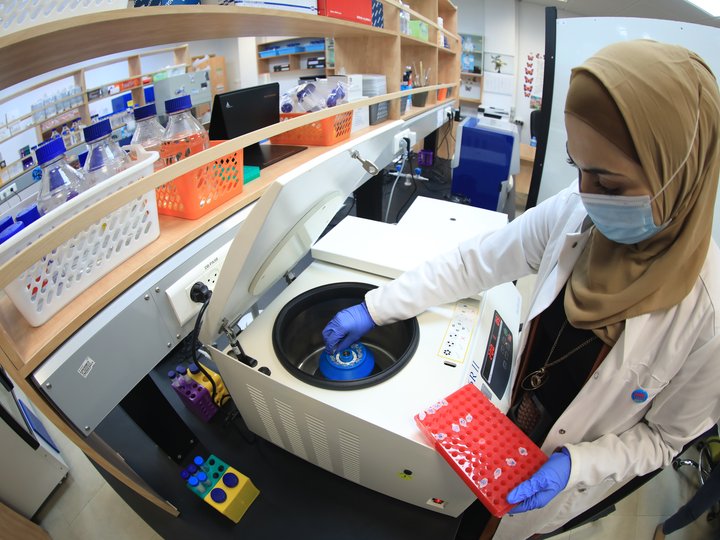

The animal lab is a service unit. It was established in 2016 with the primary mission to breed specific laboratory animals free of pathogens for research and education purposes, mainly for the faculty of medicine and health sciences, although animals are also provided for other departments and units of the university. The lab also provides advice on matters related to laboratory animal science.
The lab is divided into :
- Stock room, which includes mice (Balb/c & C57) and hamsters, where reproduction is made upon request.
- Research room, where the mice are separated according to protocols and scientific research.
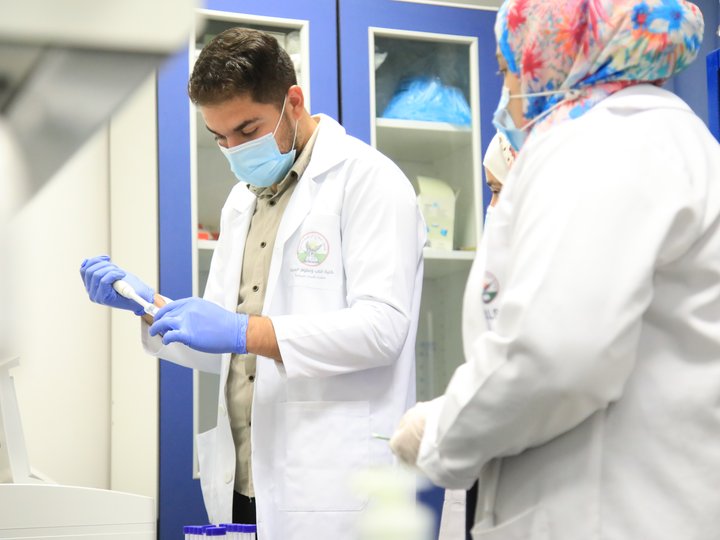
Microbiology Research Lab: It is concerned with the following:
Research in relation to Microbiology: these researches fully study microbes (bacteria, fungi, etc.) in terms of:
- Appearance by using different dyes.
- Cultivation and development in different nutritional environments.
- Conducting biochemical tests to distinguish them from one another.
- Conducting sensitivity tests by using antibiotics in order to measure their effectiveness on such microbes.
- Methods of killing such microbes by using different sterilizations.
- Molecular Microbiology, which is concerned with studying such microbes at the molecular genetic and protein levels in order to find out which antibiotics are effectively needed for them, and design accurate tests to distinguish between them.
- Studying the effect of the different medicines, plants, and organic compounds on different microbes (bacteria, fungi, .etc.)
In the Medicinal Plant Products Research Laboratory, various types of medicinal plants are studied in terms of:
- Preparing several types of plant extracts and extracting essential and fixed oils, if any, with the latest equipment.
- Conducting a set of laboratory tests to find out the active substances in each prepared plant extract.
- Examination of essential oils using gas chromatography device.
- Conducting tests to detect the safety of the plant and its readiness for human use.
- Measuring the effectiveness of plant extracts as antioxidants and their ability to inhibit free radicals.
- Examination of the effect of plant extracts on lipase, amylase and skin enzymes.
- Studying the effect of plant extracts and different essential oils as antimicrobial on different types of microbes (bacteria, fungi, etc.)
The pharmaceutical technology lab is concerned with the development of new pharmaceutical formulations to provide the adequate dosage form. The lab is equipped with the up-to-date required instruments such as ultrasonicators, thermogravimetric analyzers, differential scanning calorimeter, dissolution apparatus, tableting machine, extruders and granulators.
The lab deals with the basic and applied research for the innovation of various dosage forms to design, as required, drugs with specific characteristics such as controlled and sustained release properties.
The lab deals with the development and synthesis of new therapeutics and nanomaterials. The conducted research focuses on the field of anticancer therapy, anti-inflammatory and antimicrobial therapeutics.
The mission of the lab is to link between the chemical synthesis and the advancement of engineered nanomaterials to realize advanced therapeutic modalities. These developed Nano-therapeutics will be modulated from the basic research to the in-vivo studies, and to the clinical trials. The lab contains all up-to-date instrumentations with the adequate safety procedures and guidelines.
